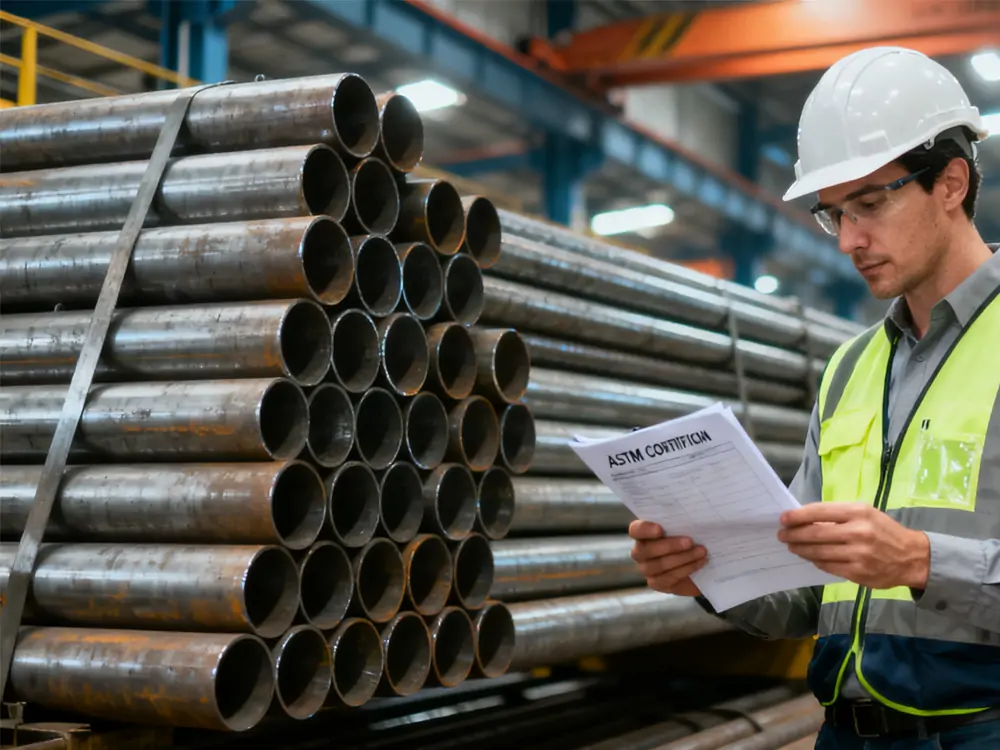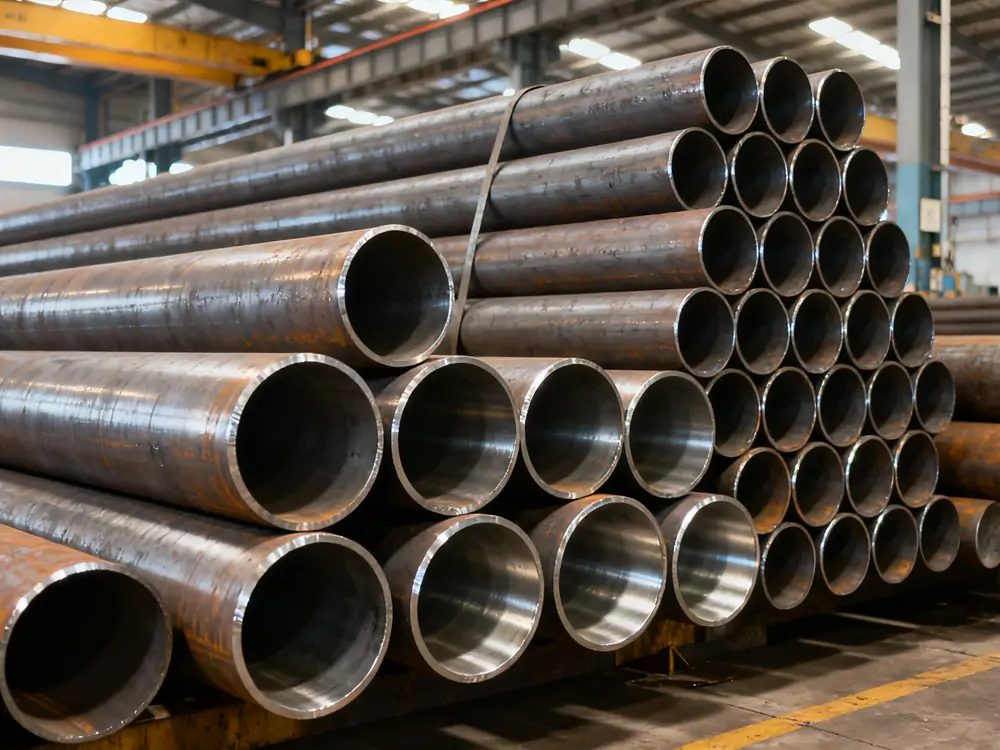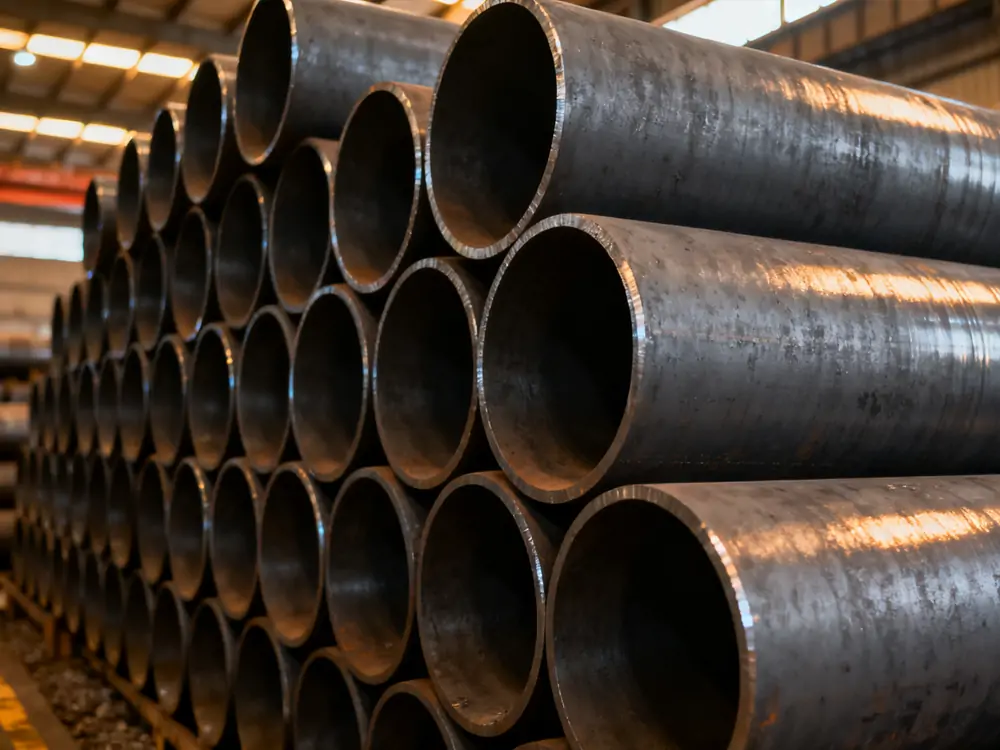Introduction
The industrial use of ASTM A53 and ASTM A106 steel pipes makes them the most common types of carbon steel pipes. The carbon steel pipes comply with ASTM A53 and ASTM A106. They have wide applications in different sectors, because these pipes differ in their objectives, applications, and specifications.
The significant difference between the two carbon steel pipes, according to international standards, is that A106 must be seamless at its joints. In contrast, carbon-steel pipes to the A53 standard can be welded or seamless.
Choosing the right carbon steel pipe for the job is crucial; otherwise, efficiency and costs decrease. In this article, you will learn about the key differences between the ASTM A53 and ASTM A106 standard steel pipes.
Why do Steel Pipes Require ASTM Certification?

ASTM certification is required to ensure that steel pipes are of high quality, safe, and perform well. The certifications establish the chemical content, mechanical properties, and dimensional precision of the materials and ensure uniformity across other industries.
- The use of ASTM-certified pipes in vital applications such as water systems, construction, and oil & gas has grown in confidence.
- Manufacturers have observed that uncertified pipes are unable to withstand pressure or resist corrosion, which can result in costly damage or safety risks.
- Consequently, ASTM certification assures that individual steel pipes deliver as expected, comply with regulations, and align with global engineering and construction standards.
Overview of ASTM A53 Steel Pipe

Definition and standard
ASTM A53 is a standard specification that includes carbon steel pipes, both seamless and welded. It is mainly used for low to medium-pressure service and general mechanical service.
Manufacturing processes
The seamless form is created by piercing solid steel sheets, whereas the welded form is made by rolling the steel into a cylindrical shape and welding the edges. The seamless pipes are made by the hot-rolled and cold-drawn method. While welded pipes are available in F (furnace-welded), E (electric-resistance welded), and S (seamless) grades, Grades A and B are the most popular.
Applications
In addition to being utilized in mechanical systems, galvanized pipelines, supporting structures, and construction, ASTM A53 pipes are typically used in the low- to medium-pressure transportation of water, air, steam, and oil.
· Key characteristics
- These pipes are available in a seamless and welded version.
- Applicable to low to medium temperature and pressure conditions.
- Good welding and machining properties.
- Cost-effective and extensive distribution.
Overview of ASTM A106 Steel Pipe

· Definition and standard
ASTM A106 is the standard specification of seamless carbon steel pipe that is used in high-pressure and high-temperature services. It comes in Grades A, B, and C, with Grade B being the most popular in the power generation, refineries, and petrochemical plants industries.
· Manufacturing processes
ASTM A106 is manufactured only by the seamless process, usually by hot-rolling or cold-drawing. This process offers high-quality strength, consistent wall thickness, and eliminates the possibility of weld-seam failure.
· Applications
Typical applications are transporting in the oil and gas industry, the chemical industry, power generation, and construction.
· Key characteristics
- High integrity construction using seamless only.
- Constructed for high-pressure and high-temperature environments.
- Close dimensional and wall thickness requirements.
- Superior wear and tear protection.
· Comparison Table
| Characteristics | ASTM A53 | ASTM A106 |
| Types | Seamless or welded | Only seamless |
| Grades | Grade A and B | Grade A, B, and C |
| Material composition | Carbon steel | Carbon steel with added silicon |
| Manufacturing process | Furnace-welded, seamless, and ERW | Hot-welded and cold-drawn seamless |
| Heat tolerance | Moderate | High |
| Applications | Plumbing and water lines | Refineries, process piping, and power plants |
ASTM A53 vs ASTM A106
1. Chemical Composition
Although the two standards have similar base materials, ASTM A106 Grade B contains silicon (0.10% minimum), which increases heat resistance. Additionally, the sulphur (≤0.035%) and phosphorus (≤0.035%) are lower in A106 than in A53 (≤0.05% and ≤0.045% respectively), which enhances ductility and weld quality.
2. Mechanical Properties
Mechanical strength of both A53 and A106 Grade B, Tensile strength of 415 Mpa (60,000 psi), and yield strength of 240 Mpa (35,000 psi) are similar. But A106 Grade C has higher tensile and yield strengths, making it suitable for more demanding environments.
3. Manufacturing and Testing
ASTM A53 pipes may either be welded or seamless, whereas A106 pipes are all seamless. The seamless manufacturing process provides more pressure and homogeneity. ASTM A106 is reliable in critical applications because it is also subject to more stringent quality criteria, such as tensile, flattening, and hydrostatic tests.
4. Pressure and Temperature Rating
For low to moderate-pressure systems, you can use ASTM A53, which includes water or steam distribution lines. ASTM A106 pipes are applied to high-pressure, high-temperature systems; thus, they are necessary in power plants and refineries.
Conclusion
The use of both ASTM A106 and ASTM A53 is everyday across industries. ASTM A106 is designed to withstand high temperatures and high pressures; ASTM A53 is suitable for low-pressure and general-purpose applications. You may select the best material and ensure the project’s affordability and safety by being aware of these variations.
Contact Uniasen for superior-quality carbon steel pipes that meet ASTM standards. They have a diversified production line with great experience. The company is delivering to its customers on time.
